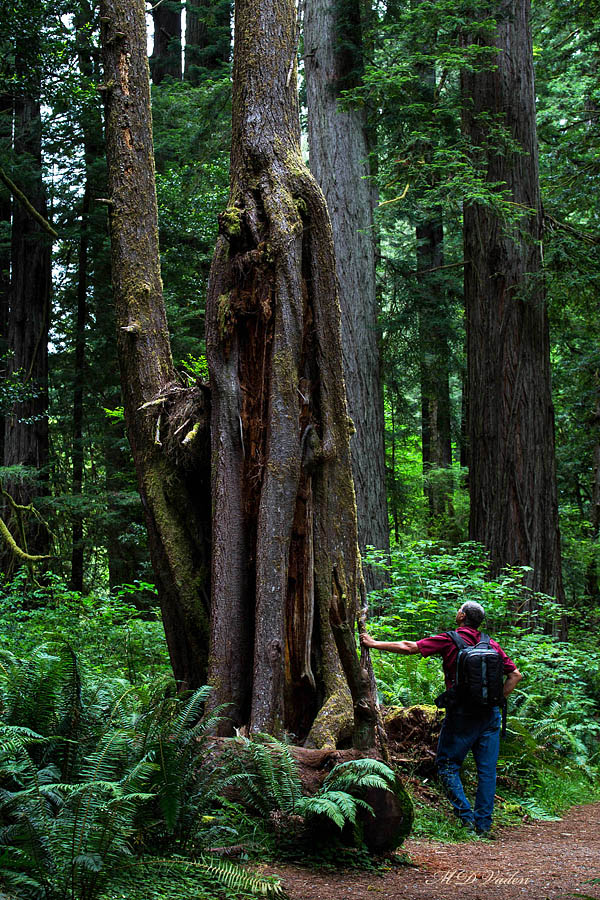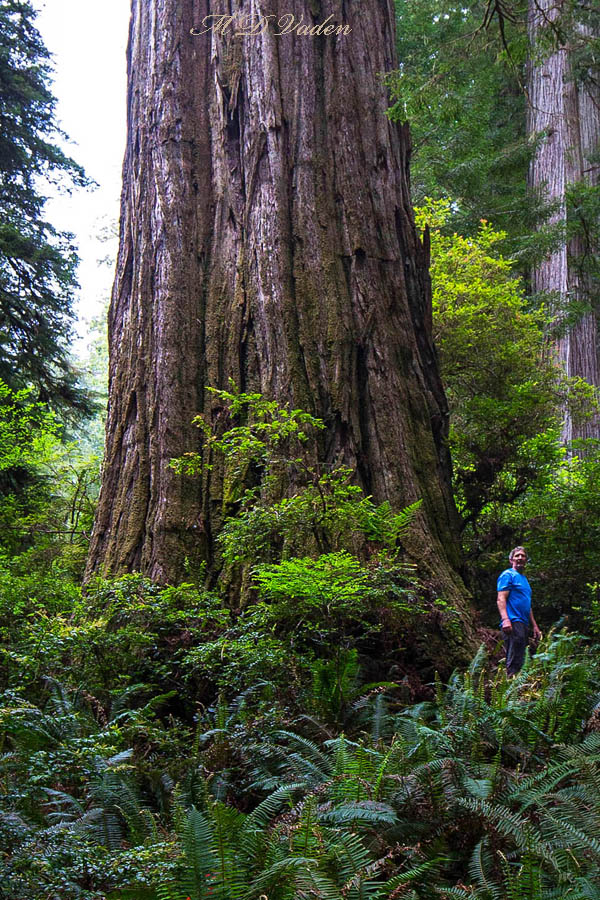In the USA, champion trees are the largest for a species. The word “champion” denotes largest is based on a point tally, not total wood volume. Its a triathlon where points are awarded for height, circumference and crown spread. In the USA, American Forests manages the national registry and has the most recognized champion list. But when we boil facts, whatever tree is known to be the largest is the real champion whether or not it was nominated. Presently, the greatest revealed coast redwood champ is Spartan. It has enough points to be the overall champ among all species too. One point is given for each foot of height, inch of circumference, and every 4 feet of crown spread.
The reason for today’s post stems from the hemlock shown in one photo below. It germinated a long time ago on top of a stump, about 18 ft. above the ground. If this hemlock was nominated to contend as a champion, the cadre of some organizations would exclude 18 ft. of height from the stump top down to the earth. They try to guess where it germinated and call the part beneath “roots”, excluding that. In doing so, they become subjective rather than objective and break some rules of definition. It also means they apply different rules to different trees.
Let me use Stout Grove to help clarify. The large redwood in Stout Grove is about 16.7 feet wide and 325 ft. tall above the earth. If American Forests or ENTs cadre measured , they would probably assign all 325 ft. (while knocking 18 ft. off the hemlock in the photo). But Stout Grove has 7 ft. or more sediment dumped over the grove’s original grade, evident by the huge trunk that fell a few yrs. ago. A core sample in one visitor center shows a foot from the 1964 flood alone. If height points are removed from a hemlock due to point of germination, then height points should be added to others for every foot of sediment covering the level where it germinated. But this virtually never happens, and could be very impractical anyway.
On account of all this, the most objective way to measure height is to count every vertical foot of wood above the earth that adds height. If what used to be roots became exposed and now supports the canopy, then it became stem. Especially since those no longer draw moisture or nutrients above the earth anymore.
In the second image below, a measuring expert is standing next to a coast redwood which appears to have no added sediment and no roots that eventually became stem. The height for this form of redwood would be measured the same way by almost any organization. Little to no debate would ensue over that redwood’s numbers.
Due to small nuances about the definition of roots and trunks, I encourage others to count every foot of height above the earth in spite of most changes.



Recent Comments